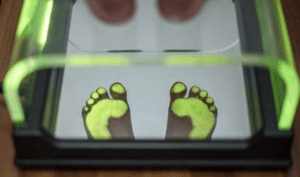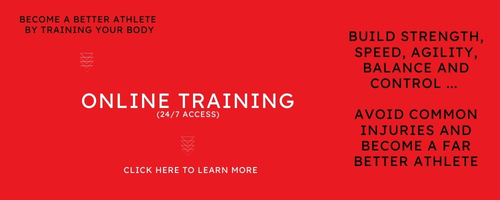Buying The Right Kids Shoes

Written By Stewart Briggs.
Co-written by Cassy Mingin and Evelyn Briggs.
When I suggest to a parent or athlete to go to the podiatrist, I am often not met with enthusiasm. Going to the podiatrist can feel like the last thing you want to spend money on but, it was the best purchase I’d ever made for my child’s sporting ambitions.
This article delves into the important role that a podiatrist can play in your child’s sporting endeavours.
Touching on key topics such as:
- when to set an appointment,
- how to choose the best pair of shoes,
- the collaborative role a podiatrist play with a physiotherapist and
- what exercise can prevent you needing to go to the podiatrist
When it’s time to book an appointment:
Booking an appointment with a podiatrist in the pre-season period of your child’s sport has the potential to be very beneficial.
It is important to ensure right at the beginning that there are no issues with your child’s feet. Problems in regards to the arches and the gait are 2 major areas your podiatrist with look at. These 2 areas may impede on their sporting performance as these could be compounded by training in the wrong shoes all season.
The end of the season is often too late to resolve any overuse injuries that might have cropped up.
It’s also a good idea to see a podiatrist at the beginning of the school year (or whenever you usually buy school shoes). As kids will be spending a large portion of their day in their school shoes, it’s important to have the proper support their feet might need.
If your child is experiencing any pain stemming from their feet, or even their ankles, knees and hips, this is another important time to make an appointment to see the podiatrist as this pain could be an indication of imbalances, asymmetry or other more serious problems that can worsen if not treated timely.
Practical Tip: Look out for when your child is walking- are one, or both, of their feet pointing either outwards or inwards when they are walking? This is a sure signs that your child needs to visit the podiatrist to correct their walking.
Your podiatrist may recommend orthotics if there are alignment discrepancies that need to be addressed in either your child’s hips, knees or ankles. Orthotics can help fix these issues and assist in creating correct force transfer throughout your child’s body which will help to ensure minimal pain and optimal sporting performance.


Lazer 3D foot scanners produce the image for podiatrists of what orthotic you need.
Consultation tip: Try to listen inherently on the tips the podiatrist gives when it comes to the selection of shoes because this can create a major difference in your reduction of pain. Remember to listen to your child if they tell you they are experiencing pain, they don’t lie about pain and it is important to get onto this early and contact specialists.
Shoe Shopping… Knot Again!
When it comes to choosing the right general shoe for your child, podiatrists suggest that there are three key things to consider when doing so.
-
Does the shoe bend at the toe?
- The shoe should bend at the toe to allow for correct walking mechanics, if it doesn’t bend this can place more stress on the calf which can lead to an increased risk of injury. However, there are ways to check if the shoe bends too much.


The first shoe is ideal as it bends at the toe enough to allow for good walking mechanics. Although ,the second shoe is far too flexible. This type of shoe can cause knee and ankle problems as it doesn’t have enough strength and stiffness.
2. Does the shoe have good torsional strength / stiffness?
- When you twist the shoe sideways, a good shoe will resist this movement well. This is an important feature for the shoe to have because shoes that are more flexible in this direction will offer less support. This can lead to injuries and biomechanical flaws in your child’s walking, running, jumping or landing.
3. Does the shoe have a heel cup?
- This is a firm cup that sits around the heel of your foot and is a vital aspect of the shoe for good support. It is also important in restricting the ankles’ ability to move side to side, therefore limiting potential for injury.
- If the shoe does not have a heel cup, when the foot is moving side to side the fabric of the shoe is easily moved, meaning there is a greater risk of ankle injuries due to poor stability and support.
That also means NO wearing thongs 24/7 (we’re looking at you Aussies). Thongs are the least supportive shoes for anyone.
With that being said, podiatrists recommend that children (under the age of 12) who have no pre-exsisting walking or body pain problems, should be encouraged to wear minimalist sneaker footwear or predominantly walk barefoot when not playing sport. This encourages the muscles to function without the constant support of footwear.
Seeing a podiatrist can greatly assist in shoe selection as they will also be able to help you chose a shoe suited to the demands of your child’s feet and sport.
Podiatrists and Physios, the essential pair.
When deciding to see a podiatrist, it is also important to consider the collaborative practice they have with physiotherapists as this can further enhance your child’s sporting performance. In health professions, it is important to have a whole patient approach as opposed to each profession working separately in their areas of expertise.
The podiatrist-physiotherapist collaborative practice is exceptionally important as your feet are at the bottom of the kinetic chain of your body. There is a possibility that any issues your child is experiencing in their hips or back stem from their feet.
Podiatrists play an important role in the management of injuries regarding foot function, the use of orthotics and the correct footwear. Physiotherapists help to utilise the changes the podiatrist has made through improved function of the body further up the kinetic chain such as the knee, hip or back.
It is important for these professions to work together as a whole body approach to give the greatest chance of reducing pain, decreasing risk of injury and improving sports performance.
In my experience, everyone should visit a physiotherapist at least twice a year, even more-so for teens that are growing during puberty. Keeping your body in check and visiting professionals is one of the most important things you can do for your overall health.
Exercise to prevent needing Orthotics or going to the Podiatrist.
This is a forefoot mobilisation exercise called Monkey Feet.
The purpose of this exercise is to strengthen intrinsic feet muscles, improve support through the tripod points of the foot and improve alignment of feet to ankle. Building these aspects of your feet muscles will help to prevent needing to go to the podiatrist.
Instructions:
- Sit on chair/box
- Ensure the athlete has removed all footwear
- For right foot cross right leg and support on the left thigh.
- Use left hand and place all fingers between the toes of the foot.
- Right hand is supporting the right foot.
- Flex and extend all 5 toes, moving the joints up and down. Complete for approximately 30 seconds.
- Repeat with the other foot
So, although it may seem like the last thing we want to do. Setting up your feet properly and wearing good, supportive shoes is essential to performing at your best and staying injuring free.
Contact us if you’d like to know more exercises like this.

